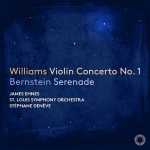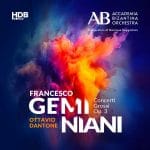

Composer: Erland Cooper
Format: FLAC (tracks)
Label: Mercury
Catalogue: 6556239
Release: 2024
Size: 1.12 GB
Recovery: +3%
Scan: cover
01. Carve the Runes Then Be Content With Silence (Full Version)
02. Carve the Runes (Mvt. 1) (Pt. 1 “bouncing and bending in the harbour”)
03. Carve the Runes (Mvt. 1) (Pt. 2 “through that yellow spindrift”)
04. Carve the Runes (Mvt. 1) (Pt. 3 “you must dance in a beautiful coat”)
05. Then Be Content (Mvt. 2) (Pt. 1 “song of the five seas”)
06. Then Be Content (Mvt. 2) (Pt. 2 “driftweed scored the strings”)
07. Then Be Content (Mvt. 2) (Pt. 3 “walking through heather and peat”)
08. With Silence (Mvt. 3) (Pt. 1 “con la memoria”)
09. With Silence (Mvt. 3) (Pt. 2 “wow and flutter of unearthed magnetic tape”)
10. With Silence (Mvt. 3) (Pt. 3 “our winter jar”)
11. With Silence (Mvt. 3) (Pt. 4 “sunwards turn”)
Erland Cooper’s new album Carve the Runes Then Be Content With Silence. The album is a recording of Cooper’s brand new three-movement composition for solo violin and string ensemble. The work marks the centenary of celebrated Orkney poet George Mackay Brown, as 2021 marks 100 years since his birth.
Inspired by natural landscapes and ruminating on time, hope, community and patience, the sole recording of the work – on ¼ inch magnetic tape, with the digital files permanently deleted – has been planted to grow and be nurtured or “recomposed” by the earth, before being exhumed and released in three years’ time. Whilst Cooper will not be unearthing the tape until 2024, he has left a trail for anyone to search and find it if they wish. A map with clues to the location of the planting site will be released via his digital platforms. If the planted tape is found, Erland will invite the discoverer to his studio to embark on a journey together for the treasured first listen. It will then be released exactly as it sounds from the earth.
Erland Cooper says, “Music can so often feel undervalued and for some, being unable to perform live has at times felt like being buried. When an idea forms there is often an urge to share it as quickly as it develops but like spotting a bird, I want to let this fly and land in its own place and time. The work is one part remembrance and one part celebration of a landmark time.” He adds: “The material on the tape may erode naturally, disintegrate and create drops of silence or the peaty soil may preserve it perfectly well. It may or may not get better with age. I may or may not fall out of favour with my composition. Any alterations to the sound and music [when it comes out of the earth] will be reincorporated into the pages of a new score and live performance, as orchestral articulations.”
Although Erland Cooper has composed for the BBC Philharmonic, been commissioned to score the Platinum Jubilee of Queen Elizabeth, and has recorded more than a dozen releases as a solo artist, bandleader (Erland & the Carnival), and band member (The Magnetic North), each encounter with his music feels like discovering a secret treasure. The deeply personal sonic geography of his two albums with Hannah Peel and Simon Tong as The Magnetic North focused on his home in the remote Orkney Islands—a Scottish archipelago—and may be some of the most impressive and underappreciated works of the 2010s. And the three, interlocked and highly individualistic classical pieces he released between 2018 and 2020 (Solan Goose, Sule Skerry, and Hether Blether—all of which were also accompanied by remarkable, collaborative ambient pieces) are gorgeous, rustic, and naturalistic, functioning like sonic echoes of the more direct Orcadian sounds of the Magnetic North. With this catalog, Cooper has established himself as a daring and talented musician with a very particular thematic focus; what Charles Ives was to New England in the early 20th Century, Cooper may very well be to the Orkneys in the early 21st.
While it shouldn’t be too surprising that Cooper’s major-label debut has roots in the Orkneys, the way those roots are literally manifested might be. Once Cooper completed Carve the Runes, his contract stipulated that the actual master recording tape and the sheet music would be buried in the soil near Cooper’s childhood home on the islands, only to be exhumed three years later after the earth had played its part to “mix and master” the material as it were. All digital copies were destroyed, making it a bit of a high-wire act, but when the tapes were dug up by two fans in late 2022 (an actual treasure hunt!), the music was intact, if definitively impacted (occasional noise, distortion, dropouts) by its burial.
And while that’s certainly an interesting approach to finalizing this material, it would be pointless if the core work wasn’t impressive on its own. The composition itself is written for solo violin and a string ensemble, but is accentuated by the spoken words of Orkney poet George Mackay Brown. While it starts off sounding like any number of gently melodic, lushly minimalist contemporary classical pieces, it doesn’t take long for Cooper to put his stamp on the material. The combination of Brown’s voice—taken from crackly vinyl records—and the circular, propulsive string figures helps unfold the piece into a panoramic vista that feels both warmly intimate and longingly expansive. The entire piece is just over a half-hour long, but each movement offers its own perspective and pleasures, with the first being the most direct and cinematic (it builds to a magnificent crescendo near the end), the second centered around a hauntingly sparse reprieve, and the final bringing the whole piece to a dramatic dissolution. It is a remarkable piece, suffused with organic earthiness, regardless of its time spent underground.



